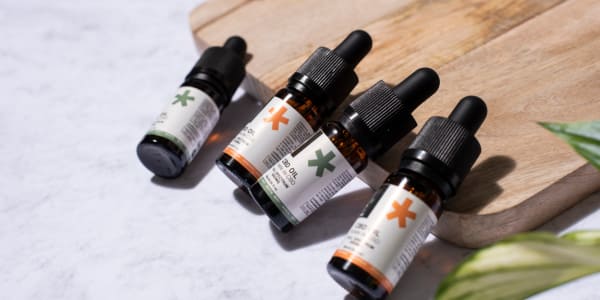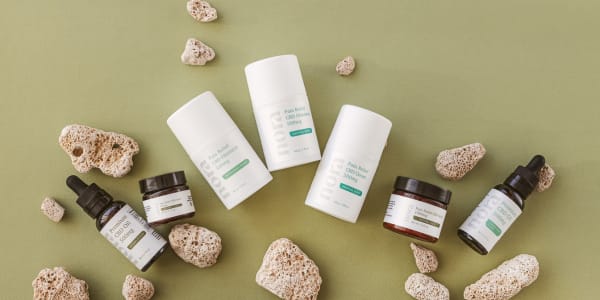In recent years, CBD (cannabidiol) has emerged as a popular wellness trend, touted for its potential health benefits. Derived from the cannabis plant, CBD is non-psychoactive and is believed to offer therapeutic effects without the "high" associated with THC (tetrahydrocannabinol). As the market for CBD continues to expand, consumers are faced with a wide array of products to choose from. In this guide, we'll explore the are there different types of CBD products available, their characteristics, and potential benefits.


What is CBD?
CBD, or cannabidiol, is a natural compound derived from the cannabis plant. Unlike THC, it doesn't cause a high sensation. CBD is commonly used for its potential therapeutic benefits, such as pain relief, anxiety reduction, and improved sleep. It interacts with the body's endocannabinoid system to produce these effects and is available in various forms, including oils, capsules, and topical products.What are the potential benefits of CBD
- Pain relief
- Anxiety and stress reduction
- Improved sleep
- Neuroprotective properties
- Anti-inflammatory effects
- Antioxidant properties
- Potential anti-seizure effects
- Mental health support

How many types of CBD are there?
There are three different types of CBD you will likely come across:CBD Isolate
CBD isolate is the purest form of CBD, containing 99% CBD and no other cannabinoids or plant compounds. It is typically sold as a crystalline powder or in crystalline form. CBD isolate is odorless and flavorless, making it easy to incorporate into various products. Some users prefer isolate for its potency and lack of THC, making it a preferred option for those who undergo regular drug testing or prefer to avoid THC altogether.Full-Spectrum CBD
Full-spectrum CBD products contain a wide range of cannabinoids, terpenes, and other beneficial compounds found in the cannabis plant, including THC (though in trace amounts, usually less than 0.3%). This "entourage effect" is believed to enhance the therapeutic effects of CBD by leveraging the synergistic interactions between cannabinoids and other plant compounds. Full-spectrum products may offer a more comprehensive approach to wellness compared to CBD isolate.Broad-Spectrum CBD
Broad-spectrum CBD products contain a similar array of cannabinoids, terpenes, and other compounds as full-spectrum CBD but with one significant difference: they are THC-free. Broad-spectrum CBD is ideal for users who want to experience the entourage effect without consuming THC, whether due to personal preference or concerns about drug testing.How to Consume CBD
Consuming CBD is a personal choice, and the method you choose depends on your preferences, lifestyle, and desired effects. Here are some common ways to consume CBD:
Oils and Tinctures
CBD oils and tinctures are typically available in bottle sizes ranging from 1 ounce to 4 ounces, with a dropper labeled in .25-milliliter intervals for dosage. When administered under the tongue, users may experience quicker effects compared to other CBD forms, as sublingual consumption allows for more efficient absorption into the bloodstream. "While tinctures and oils may offer a more flexible dosing method, they can be less convenient than edibles, gummies, or capsules due to the potential for spills and the need to carefully measure the dose using the dropper."Gummies and Other Edibles
CBD gummies and other edibles, like candies, cookies, brownies, and infused foods or drinks, generally take longer to take effect compared to oils and tinctures. When consuming gummies and edibles, they undergo digestion first, causing a delay in the onset of effects—and resulting in a lower amount of CBD entering the bloodstream.Capsules
CBD capsules and pills offer a convenient and familiar way to consume CBD, similar to taking other supplements or medications. They come in pre-measured doses, making it easy to track consumption. Capsules and pills are preferred by users who value consistency and precise dosing. They are also tasteless, which can be appealing to those who dislike the natural flavor of CBD oil.Lotions, Creams and Other Topicals
Many individuals grappling with chronic pain and various skin conditions find solace in applying CBD-infused topicals like lotions, salves, and ointments to the affected areas. Topical forms of CBD, such as creams or lotions, deliver minimal amounts into the bloodstream, potentially minimizing side effects such as diarrhea and lethargy. However, individuals seeking relief for non-skin conditions like pain, insomnia, or anxiety may benefit more from CBD products that directly enter the bloodstream and should opt for non-topical alternatives.Vapes and Smoking Flower
CBD vapes are available in slim, pre-filled, or refillable cartridges, also known as "pens," through which CBD oil is inhaled. Alternatively, one can consume CBD by smoking dried hemp flowers. Inhalation methods like vaping or smoking typically lead to quicker effects and enhanced CBD absorption in the bloodstream. However, potential risks associated with inhaling CBD, including lung damage, difficulties in dosage control, and insufficient research on the topic. Moreover, vaping poses other risks such as exposure to substances like vitamin E acetate, heavy metals, or solvents like propylene glycol or vegetable glycerin used in CBD oil. These additional compounds may cause adverse health effects on the lungs or throughout the body.How to Use CBD Safely
Using CBD safely involves several key considerations:- Start with Low Doses: Begin with a low dose of CBD and gradually increase it until you achieve the desired effects. This allows you to gauge your body's response and minimize the risk of adverse reactions.
- Consult with a Healthcare Professional: Before incorporating CBD into your routine, consult with a healthcare professional, especially if you have pre-existing medical conditions or are taking medications. They can provide personalized guidance and ensure CBD is safe for you.
- Choose Quality Products: Opt for CBD products from reputable manufacturers that undergo third-party testing for potency and purity. Look for products that contain accurate CBD concentrations and minimal contaminants.
- Follow Usage Instructions: Adhere to the manufacturer's instructions regarding dosage and administration method. Whether using CBD oil, capsules, edibles, or topical creams, follow the recommended guidelines for safe and effective use.
- Monitor for Side Effects: Pay attention to any potential side effects when using CBD, such as drowsiness, dry mouth, or changes in appetite. If you experience adverse reactions, adjust your dosage or discontinue use and consult a healthcare professional if necessary.
- Be Cautious with High-Risk Methods: Exercise caution when using high-risk methods of CBD administration, such as vaping or smoking. These methods may pose additional health risks, so weigh the potential benefits against the associated hazards.
- Consider Individual Factors: Consider individual factors such as age, weight, metabolism, and sensitivity to CBD when determining the appropriate dosage and administration method for your needs.

